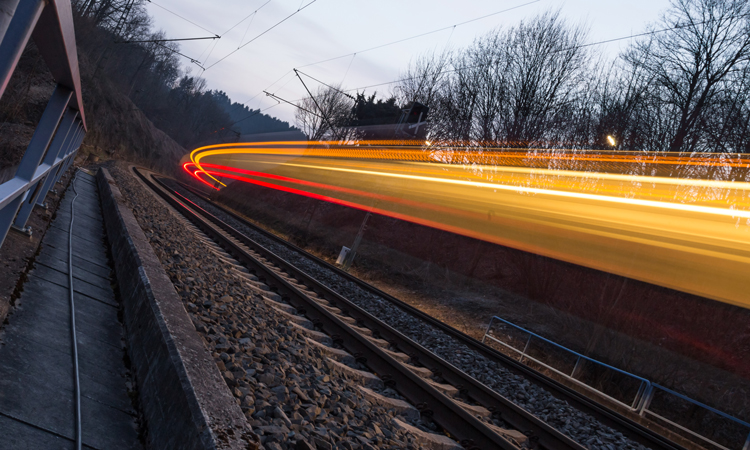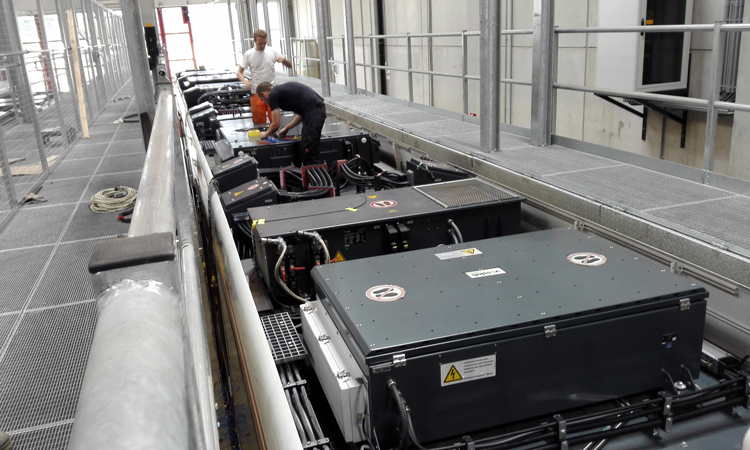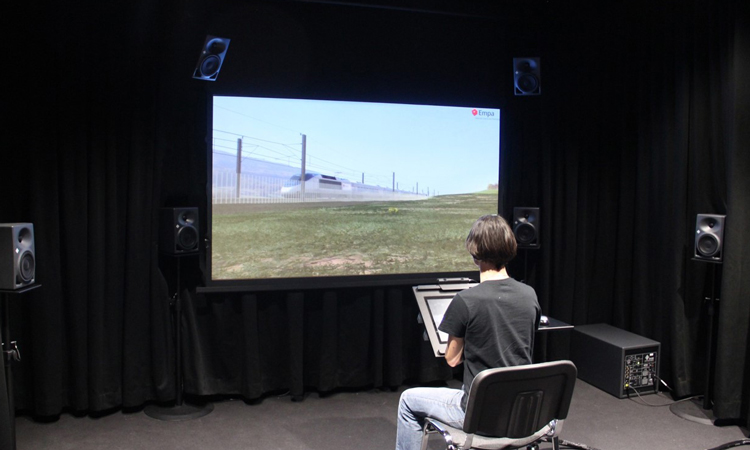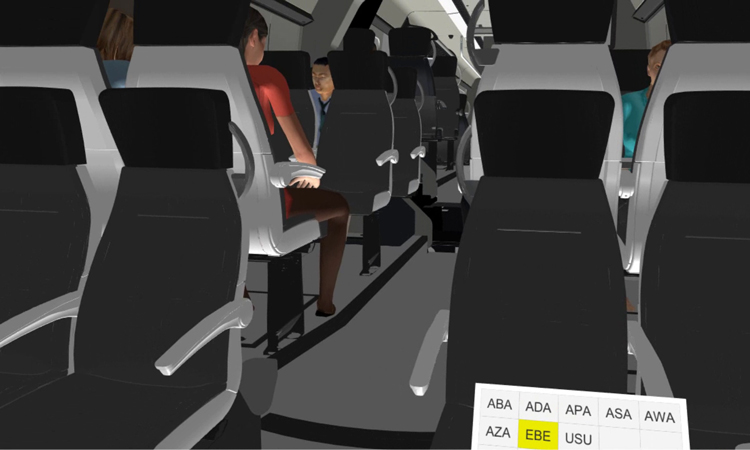Project DESTINATE results: Decision-support tools for implementing cost-efficient railway noise abatement measures
Posted: 4 March 2019 | Jenny Böhm - DESTINATE | No comments yet
Environmental noise is one of the major public health issues in Europe, and in view of climate change, a shift from road to rail traffic is targeted. This will lead to an increase in rail noise if no further mitigation is applied. Jenny Böhm, Coordinator of Shift2Rail research and innovation project DESTINATE, and Research Assistant at the Chair of Rail Vehicles within the Technical University of Berlin, explores how the project focused on activities to support informed decisions on rail noise mitigation to reduce costs and annoyance and increase acoustic comfort.


DESTINATE is a European research and innovation project funded by the railway joint undertaking Shift2Rail. The DESTINATE project contributes to the Shift2Rail initiative’s objectives to improve trains (e.g. quieter and more comfortable) and attract more users to rail by1:
- Enhancing attractiveness and comfort for rail users through improved interior noise prediction and perception-based evaluation of mitigation measures with innovative approaches like auralisation and visualisation (A&V)
- Reducing railway noise annoyance: With A&V of passing trains and simulation of mitigation measures it is possible to systematically investigate perception of rail noise mitigation alternatives. In combination with cost assessment, this is expected to lead to an efficient reduction of railway noise annoyance.
Summary of project research
The project covered the following four main research fields:
- Interior railway noise prediction
- Source and sub-assembly characterisation methodologies
- New technologies including A&V and active technologies for windows
- Cost-efficiency assessment of railway noise mitigation.
These research fields are not isolated but interact with each other. From the beginning, a close cooperation with the Shift2Rail member project FINE 1 was sought to ensure the uptake of industrial requirements.


The setup of validation measurements
Interior railway noise prediction
Prediction of the acoustic performance of rolling stock is essential to ensure compliance with customer requirements. The project investigated an experiment-based approach for accurate and reliable predictions of interior noise. Operational Transfer Path Analysis (OTPA) is commonly applied in the automotive industry to solve noise and vibration issues. In DESTINATE, it was transferred to the railway industry. The approach allows for ranking and thus identifying dominant sound sources and transmission paths for real-life operating conditions. It separates into sound directly emitted from a source and sound radiated as a consequence of the vibration caused by the source. Various operational conditions (e.g. running on tracks with different qualities, acoustic behaviour in curves or on switches, different speeds, etc.) could be included into the model. Analysis of spectra and time history allows for identifying annoying components like tonal or impulsive noise. As OTPA works in the time domain, results may directly be auralised.
The project investigated how a train model could be built based on OTPA, and which associated options for predicting design changes exist. Two measurement campaigns on Stadler Rail Valencia tramways were carried out by Müller-BBM and Müller-BBM Rail Technologies. The model was built on the basis of the first measurement (TramLink prototype) while the second measurement was used for validation (Gmunden TramLink). It was shown that the tram structure could be modelled from a set of transmissibility functions and predictions of design changes were possible within certain limits.
Source and sub-assembly characterisation methodologies
The acoustic behaviour of a train is the product of the interaction of sources that generate sound and vibration (or airborne and structure-borne sound) and the passive vibro-acoustic behaviour of sub-assemblies. Accurate, common characterisation methods are desirable to set specifications for relevant sound sources and sub-assemblies and verify the acoustic targets. DESTINATE investigated different measurement methods for airborne and structure-borne sound source characterisation. These were applied directly on the train in order to assess their feasibility and applicability in real-life conditions. Poznań University of Technology used acoustic camera measurements for airborne sound source characterisation and examined the influence of rail roughness on interior noise. The Technical University of Berlin applied and verified the method of in-situ measurement of blocked forces for an HVAC-unit mounted on a tram roof.
Railway noise auralisation and visualisation
DESTINATE partner EMPA (Swiss Federal Laboratories for Materials, Science and Technology, Laboratory for Acoustics/Noise Control) developed the first A&V of passing trains that is based on modelling the physical processes. The auralisation module consists of an emission synthesiser (e.g. rolling noise, wheel flats, traction), a propagation filter (e.g. geometrical spreading, Doppler effect, diffraction and reflection) and a reproduction renderer. Visualisation is based on 3D modelling of the train, infrastructure and landscape. As a demonstration for structural rail noise mitigation, a noise barrier and a railway line cutting were simulated. Parameters such as receiver location, vehicle speed and rail and wheel roughness can be varied and combined flexibly. The results were presented to experts at a workshop in August 2018 in EMPA’s AuraLab studio and in virtual reality (head-mounted display). A majority of the experts rated the simulations as very plausible with good to excellent potential for further application.
Interior noise A&V was investigated by the Netherlands Aerospace Centre (NLR). The auralisation was based on a binaural replay of spatially placed sound sources. Thus, OTPA results may be used as inputs. A combination of 3D modelling of the train interior and videos of passing landscape was used to create a realistic virtual reality experience. The visualisation helps to create a feeling of immersion. The usability of the interior A&V for psychophysical tests was examined using a speech intelligibility test in virtual reality. It was concluded that interior A&V is a very good means to investigate how train interior acoustics influence human perception.
Throughout the project duration, there was a close collaboration between the complementary projects. DESTINATE received a lot of input data from FINE 1 to develop the A&V simulations. At InnoTrans 2018, both projects presented the A&V with portable head-mounted displays to a large number of railway experts at the Shift2Rail stand.
Cost-efficiency assessment of railway noise mitigation and interior acoustic comfort
Identification of cost-efficient railway noise mitigation measures is essential to achieve widespread application. The project examined cost-efficiency assessments for five fields of application: Pass-by noise legal requirements, pass-by noise perception, parking/standstill noise, ground vibration, and interior noise/acoustic comfort. Cost-benefit analysis based on life-cycle costs was identified as a useful method and validated for pass-by noise. A focus was placed on identifying ways to include human perception in the assessment process. Perception-based approaches use human listeners as experts to rate railway noise scenarios. One powerful tool is the aforementioned A&V. Other approaches survey passengers during their train ride. The indicators used in the project were speech intelligibility or a general rating of the acoustical surroundings (soundscape approach). By analysing the sound observed by passengers while rating it, one may find rail-noise-specific, physically-describable relationships that describe interior acoustic comfort. SATIS investigated this approach on Dutch trains.


Empa’s AuraLab setup for a listening test with train pass-by auralisation and visualisation
Conclusion
Within its two-year duration, project DESTINATE made progress in railway acoustic prediction and virtual simulation as well as assessing cost-efficiency. The investigated and developed methods and tools support future decisions on rail noise mitigation and acoustic comfort on an improved information basis. Auralisation and visualisation supports the communication of effects to non-acoustic experts (residents, politicians, customers, etc.).
A detailed description of the project results can be found in four public ‘Deliverables’:
- D2.1 Review on the results of the requirement analysis and assessment
- D3.1 Overview of the results of the development of tools, models and methodologies for cost-efficient railway noise abatement
- D3.2 Demonstration of railway noise auralisation and visualisation
- D4.1 Validation and integration of proposed solutions.
Once approved, the Deliverables can be found on the project website2. Under results and publications, scientific papers and videos from DESTINATE research can be found.
As one of the project highlights, 360° videos with spatial audio of virtual train pass-bys were produced by EMPA and uploaded to a web-sharing platform3. In this way, everyone can get an idea of the capabilities of A&V and, for example, experience the perceptual difference of cast iron to composite brake blocks at home.
DESTINATE FACTS AND FIGURES:
- Duration: Two years (1 November 2016 – 31 October 2018)
- Total cost: €1,271,812
- EU contribution: €999,312
- Coordinator: TU Berlin
- Complimentary project: FINE 1
CONSORTIUM
TUB, Technical University of Berlin, Chair of Rail Vehicles, DE
EMPA, Swiss Federal Laboratories for Materials, Science and Technology, Laboratory for Acoustics/ Noise Control, CH
MMBM & MMBM-RAIL, Müller-BBM and linked third-party Müller-BBM Rail Technologies, DE
UNEW, University of Newcastle upon Tyne, NewRail Centre for Railway Research, UK
NLR, Netherlands Aerospace Centre, NL
PUT, Poznań University of Technology, Division of Rail Vehicles, PL
SATIS, Sound Advice in Technology, Innovation and Strategy, NL
STAV, Stadler Rail Valencia, ES.


Speech intelligibility test in virtual reality
References:
- www.shift2rail.org
- www.destinate-project.tu-berlin. de
- www.youtube.com/playlist?list=PLFHEzMwLXvjGY4KUMNR1PWGPWXj40jXnk
Biography


Issue
Related topics
Infrastructure Developments, Noise & Vibrations, Passenger Experience/Satisfaction, Rolling Stock Orders/Developments








